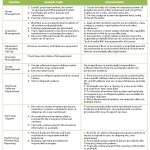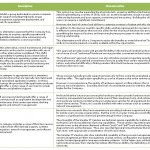Overview
Support of mobile (field) operations, remote from a Company’s “brick-and-mortar” offices, poses special and unique challenges for an organization. Increasingly, effective use of remote PC’s and PDA’s by field forces performing various functions, such as repair/service and sales, is becoming key to controlling cost, providing a high degree of customer service and remaining competitive. Beyond the needs of such field forces are the needs of the increasingly large body of those who work from home on a regular basis. Keeping them productive and in communication has become key to effective operations.
The target objectives of companies requiring such extensions of their capabilities focus on improving the timeliness and quality of service provided to mobile users, and by extension, to customers. Specific objectives include the following:
- Reduction of staff downtime
- Improved quality of service and reporting
- Reduced rollout time (new configurations and upgrades)
- Improved efficiency of the “image” process
- Improved quality assurance process
- Improved asset management.
The first step in addressing the objectives is the identification of support processes that require attention, which include the following:
- Hardware break/fix (under warranty and out of warranty)
- Hardware/software configuration
- Installing and distributing software including patches and upgrades
- Image management
- Inventory management (and parts stocking)
- Hardware training (e.g., use of zip drive; new hardware use)
- Troubleshooting/diagnostics.
The degree to which these processes are addressed or not addressed can have a dramatic impact on the productive time of mobile users. Challenges faced by those who provide mobile capabilities include the following:
- How to repair and correct problems when not physically accessible at a central location
- How to maintain the standard and approved configurations
- How to rollout new images, fixes, and upgrades
- How to ensure adequate user training on new products
- How to quantify (metrics) and monitor (track) level of service to field staff
- How to effectively track and manage the asset base.
From the user’s perspective the most difficult challenge is downtime due to required repairs. Repairs for most hardware and many software problems commonly require that staff return the loaded hardware to a central location for repairs and upgrades. Consequently, the user suffers downtime during the repair itself, as well as the time required to ship the unit back and forth, during which access is denied to company applications, systems, and e-mail. An efficiently run maintenance center can normally complete the work within two days, although total downtime, even optimally, is typically four days with shipping time. Because of the substantial impact of these realities, a key challenge to the support infrastructure is to optimize repair efficiency.
Addressing the processes, securing the objectives and meeting the challenges outlined above are addressed in the following sections of this paper, which are:
- Mobile Support Functions
- Alternative Service Delivery Approaches.
- Conculsion
Mobile Support Functions
Support services to mobile users might be provided by an internal group or “outsourced” to an external service provider. Because of the unique nature of this support function, it is typically maintained as a dedicated program, established for this purpose. The principal functions of such a program generally include the following:
- Asset Management
- Inventory Management
- Equipment Acquisition and Set-Up
- Warranty Management
- Image Management
- Hardware, Software Deployment
- End-User Support
- Performance Monitoring & Reporting.
The tasks and characteristics of each function are summarized in the table, below.
Table 1:Mobile Support Function
Alternative Service Delivery Approaches
Support services can be provided via a range of business/organizational options: totally supported internally through totally “outsourced”. Along this continuum are a variety of approaches, any one of which might be suitable, depending on a company’s needs and preferences.
Two broad options are available, insourcing (performed by the company internally) and outsourcing (performed under contract by an external provider), each having several alternatives. Each option can be further broken into the following alternatives, as follows:
Option 1: Rely Primarily on Internal Field Support Resources
- Build internal support organization
- Bootstrap own support organization with outside partner
- Purchase hardware repair service contracts from hardware vendor.
Option 2: Major Reliance on One Outside Provider
- Outsource to specialized application & support service providers
- Outsource to traditional IT service provider, either a full service or specialized provider.
- Outsource to smaller IT service provider
- Outsource to “Other” Hardware Maintenance Vendor.
An analysis of the value of the several alternatives listed above is not constructive out of context of a specific business case. Factors such as the volume of users supported, the geographic distribution of users and the complexity of computing activities will affect the impact of provider characteristics. However, it is useful to explore the characteristics of the seven alternative service delivery methods that have been identified, as depicted in the table, below.
Table 2: Alternative Service Delivery Methods
Conclusion
Mobile users’ automation support offers unique challenges to an organization. Some of the issues that must be addressed include:
- The impact of geographically dispersed users
- Users with limited technical skills
- Reduction of direct Corporate controls
- Extended communication lines
- Urgency of response requirements on service providers
- The impact of differences in scale.
Based on our experience, several approaches are available for consideration and many external providers are also active in the marketplace. As always, of greatest importance is the need to match your requirements to the available solutions: to find the “right fit” for your situation.



